- Know about and see pictures of Bhimbetka
Rock Shelters, a UNESCO World Heritage site near Bhopal.
These rock shelters are in Raisen
district, 45 kms from Bhopal, art part of the Ratapani Sanctuary. In 2003 they
were declared a World Heritage site. There are 750 rock sheters with 550
paintings of which 15 rock shelters and caves are open for tourists.
It belongs to pre-historical rock art. Paintings are in colours red, white, green and yellow. Paintings can be divided into period’s oldest Paleolithic, 10000-3000 BC, and 3000 BC i.e. young paintings. These rock shelters were discovered by Dr. Vishnu Wakankar in 1957.
We present pictures of the more popular
paintings.
1 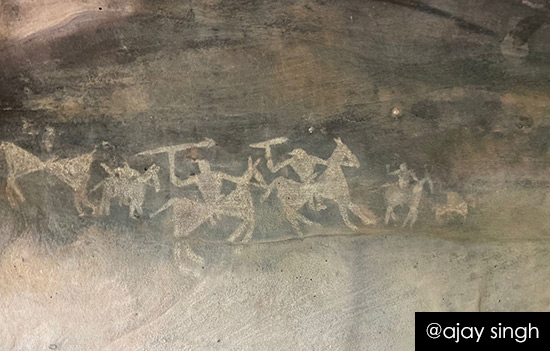 Horse riders in rock shelter 7.
Horse riders in rock shelter 7.
2 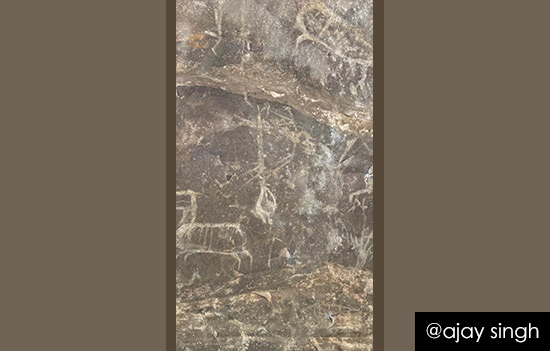
3 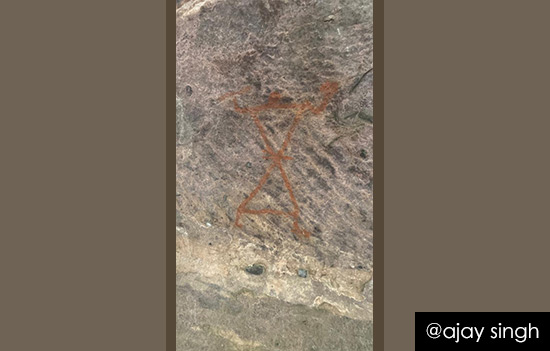
4 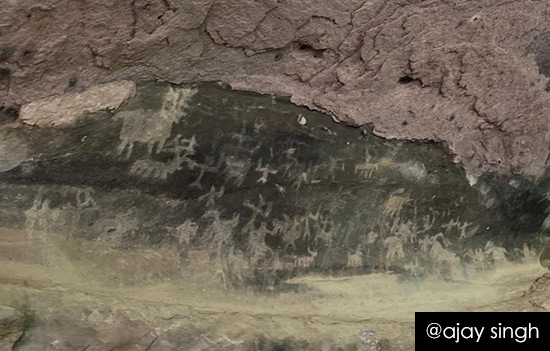
5 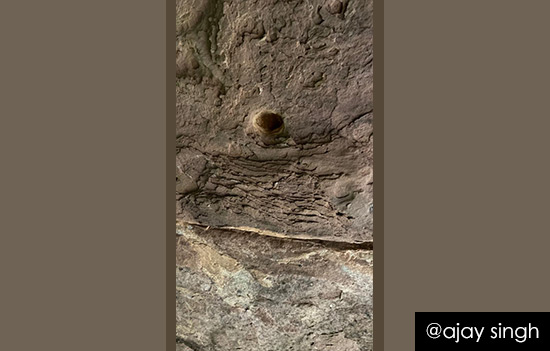
6 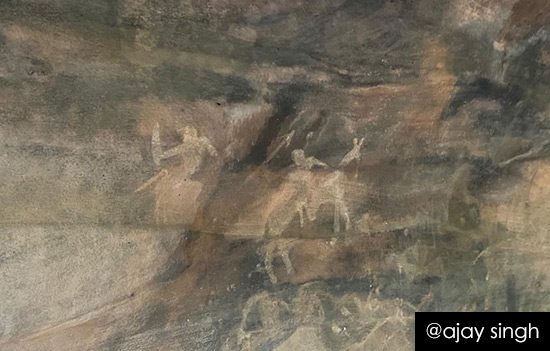 Dancing figures rock shelter 6.
Dancing figures rock shelter 6.
7 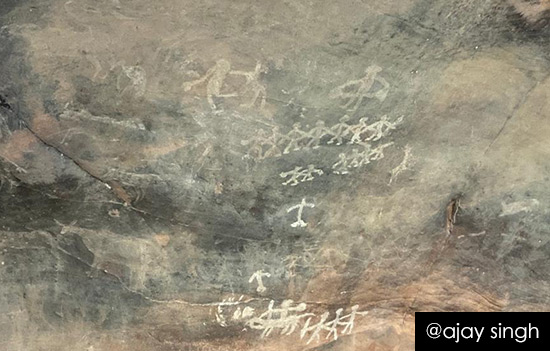
8 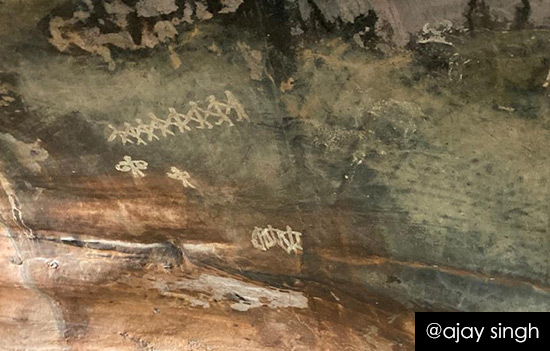
9 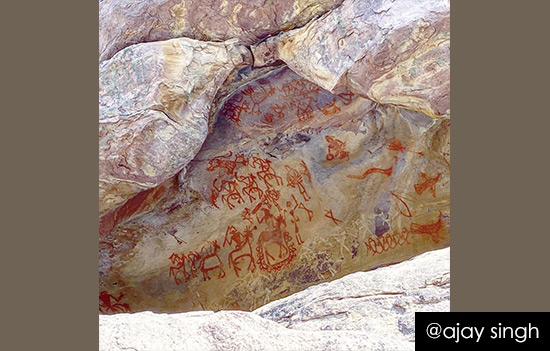
10 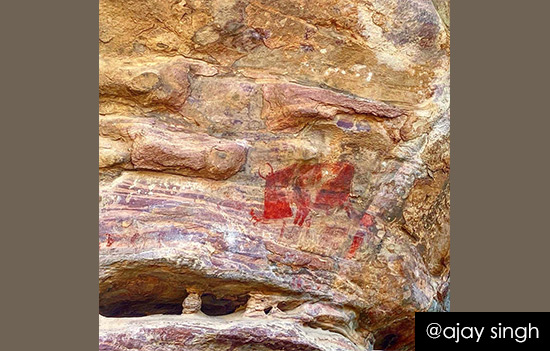
11 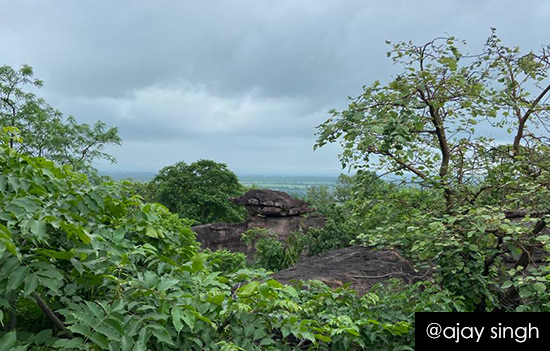
Ajay Singh is a respected Bhopal based guide. His number is 91 89821 40768
Some additional information from other websites
According to the Madhya Pradesh Tourism
site, “And a rich flora and fauna surrounding these, indeed, make Bhimbetka a gift to us from our earliest ancestors. The Bhimbetka
Rock Shelter has the oldest-known rock art in India, as well as is one of the largest prehistoric complexes to be seen. The paintings found in the rock shelters here have a striking resemblance to the ones discovered in Kakadu National Park in Australia; to the cave paintings of Bushmen in Kalahari Desert and Upper Palaeolithic Lascaux cave paintings in France.”
As per this Outlook
story – “Bhimbetka is named after Bhim, the second brother among the Pandavas in the Mahabharata. Some locals believe that Bhim rested here after he was exiled along with his brothers.”
ASI site excerpts ASI writings – “The cover of the dense forest and vegetation protected these rocks painting from being lost to the vagaries of nature. Executed mainly in red and white, with the occasional use of green and yellow with themes taken from the everyday events of eons ago, the scenes usually depict hunting, dancing, horse and elephant riders, animal fights, honey collection, decoration of bodies, disguises, masks and different type of animals etc. It depicts the detail of social life during the long period of time, when man used to frequent these rock shelters.”
“Animals such as bison, tiger, rhinoceros, wild boar, elephants, monkeys, antelopes, lizards, peacocks etc. have been abundantly depicted in the rock shelters. The superimposition of paintings shows that the same canvas was used by different people at different times.”
As per this Indiacurrents.com
report – “One of the most notable caves is called the Auditorium Cave, due to its elongated shape. It is about 39 metres long, 4 metres wide, and 17 metres high at the western end. The composition adorning its walls portray bulls, buffaloes, deer, antelopes, a peacock, a tiger, the left-hand print of a child, and an unfinished basket-like object painted over older faded lines. These are the most attractive drawings in this shelter. Further to its left, are line drawings of human and animal figures.”
“The size and shape of Zoo Rock, gives it a cathedral-like feel. It’s the largest rock shelter at Bhimbetka and may have been used for ceremonies and celebrations.”
“The cave dwellers used natural pigments and colors made from a mixture of manganese, hematite, soft red stone, and charcoal, with the occasional use of animal fat and vegetable extracts as a binding agent. When exposed to water and other solvents, the minerals are oxidized and leave a residue color on the rock surface. The colors have not faded or spoiled for centuries because of this chemical reaction.”